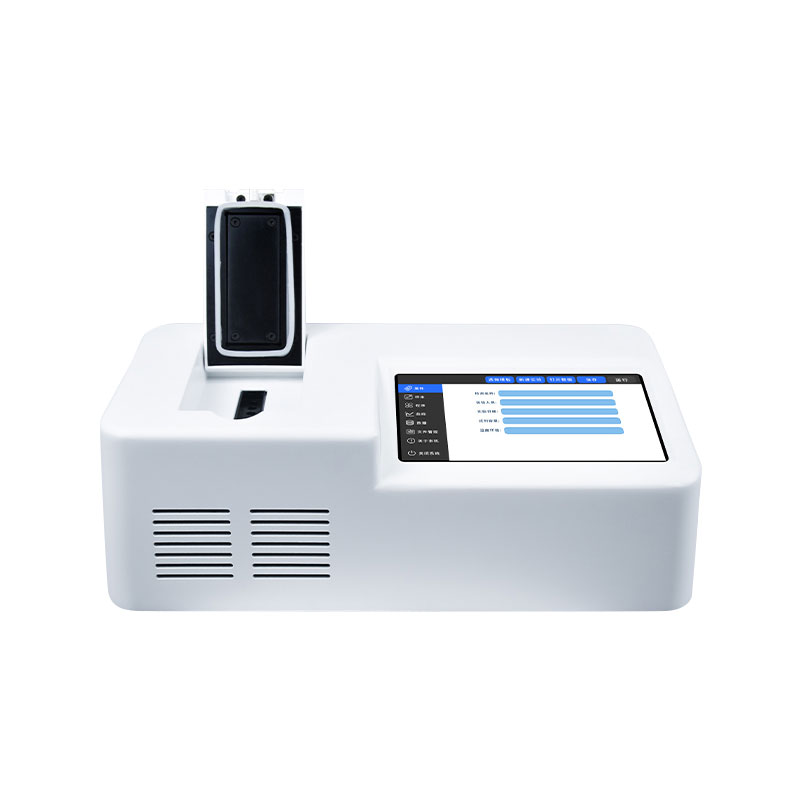Tianyi Sensor IOT Technology Co., Ltd
Sales Manager:Ms. Emily Wang
Cel,Whatsapp,Wechat:+86 15898932201
Email:info@fengtutec.com
Add:No. 155 Optoelectronic Industry Accelerator, Gaoxin District, Weifang, Shandong, China

Sales Manager:Ms. Emily Wang
Cel,Whatsapp,Wechat:+86 15898932201
Email:info@fengtutec.com
Add:No. 155 Optoelectronic Industry Accelerator, Gaoxin District, Weifang, Shandong, China

Model:FT-SC1
Brand:tianyi
Aquaculture virus detection Field testing devices for aquaculture provide rapid, precise detection of contaminants and pathogens.Aquaculture virus detection has the characteristics of simple use, easy operation and easy control.It can quickly detect viruses in the body of aquatic products such as fish and shrimp, and achieve timely diagnosis and control.
1.Features of Aquaculture virus detection instrument
1.Small size, light weight, easy to carry.Easily meet the needs of going out experiments.
2.Built-in 7-inch high-definition capacitor screen PDA, touch screen operation, simple and fast.
3.Marlow's high-quality Peltier refrigeration plate, combined with Germany's high-end PT1000 temperature sensor and the temperature control mode of the electrical resistance heating compensation edge, the maximum temperature increase speed is 7℃ and the maximum temperature decrease speed is 5℃, greatly shortening the experimental time.
4.The 3s fast lighting mode of the whole plate ensures consistency of the hole position of the experimental results.
5.Concise and intuitive software guidance, easily enable detection experiments.
2.Aquaculture virus detection application field
Basic scientific research
Pathogen detection
Adulterated meat products
Genetically modified test
Food safety testing
Drug development and rational use of medicine
Gene expression
Water monitoring
3.Technical parameters of Aquaculture virus detection
Sample capacity: 8x0.2ml, support 8-connection tube
Suitable consumables: Common transparent PCR consumables, 8x0.2ml drain pipe, 0.2ml single tube
Reaction system: 5-120ul reaction mode system
Heating/refrigeration module: imported semiconductor thermoelectric module
Temperature control range: 4°C-99°C
Average cooling rate ≥2°C/sec
Temperature control accuracy: ≤±0.1°C
Temperature uniformity: ≤±0.2°C
Number of temperature control areas: multiple points (2 points)
Number of gradients: 0
Gradient temperature range: None
Gradient hole number: None
Exciting light source: maintenance-free LED
Excitation light wavelength range: 400-700nm
Detection components: imported photodetector
Number of detection channels: standard 1 channel (FAM), high-end (optional) (FAM, VIC)
Applicable dyes and probes: FAM/SYBR Green I, VIC/HEX/CY3 (optional), ROX/Texas Red (optional), Cy5, TAMARA (optional)
Software functions: fluorescence quantitative PCR system software; real-time amplification reaction curve function; real-time reaction curve display of specific specimens; data analysis function;
Automatic determination function of Yin and Yang results; graphical display function.
Noise: <45 dB
Screen size: 7 inches (HD)
Touch screen: capacitive
External USB: Supports data import and export
Heat cover: automatic pressure adjustment
Appearance size: 290(W)*308(L)*130(H)
Box size: 75 length * 38 width * 19 height cm
Net weight: about 3Kg
In the photovoltaic field, the I-V Curve Tracer is a core device used to measure and evaluate the electrical performance of solar cells and modules. The "IV" in its name stands for Current-Voltage. This instrument accurately plots the volt-ampere characteristic curve of the measured object...
This Portable Weather Station features portability, ease of use and high measurement accuracy. Integrating multiple meteorological elements, it is a movable observation system. Adopting a new-type integrated structural design with excellent craftsmanship, this design not only greatly simplifies the...
In the field of meteorological monitoring, TianYi has launched a series of Handheld Weather Stations, among which the FT-SQ5 model has attracted much attention. It integrates the monitoring functions of multiple key meteorological elements. With high-precision sensors and intelligent chips, it can a...
The Series power supply supporting UAV inspection is a special supporting equipment for UAV inspection of photovoltaic power plants, also known as Series power supply or UAV string power supply. Its core function is to convert alternating current into direct current and input it into the battery pan...